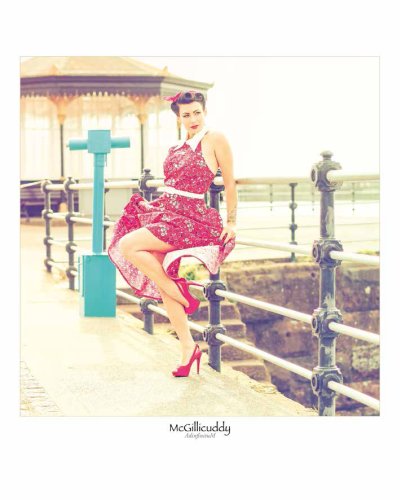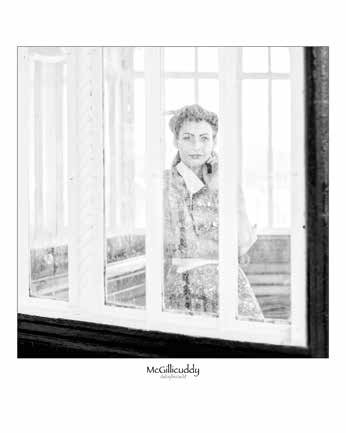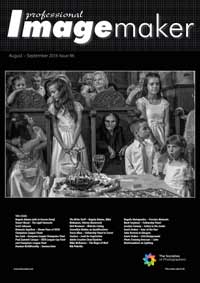articles/Lighting/und-light-page3
Rolling with the BIG Dog - Understanding Lighting - part 3 of 1 2 3 4
by Damian McGillicuddy Published 01/08/2016

CANDY GIRL
Look at the headshot of the subject holding the candy floss. Here we're using the bright daylight as accent light - it's coming behind her. So, by overexposing, we're lowering the contrast and we're saying that the sky that's behind us is in fact a big soft-box. And in doing that we accept that we've got to have some bleed; as you can see on her shoulder, we've got a tiny bit of blowout. But that is evocative of lovely bright summer sunshine, so that's an acceptable thing as long as it's relatively controlled.
In this instance we actually had with us an Elinchrom Strip Box, so we removed the inner baffle and front diffuser and we used the beautiful, shiny, specular material inside as a reflector. So we allowed the light that was coming from behind to pass her, then we pushed it back into her face with what we had to hand at the time, because we didn't have a reflector with us. And that created catch lights in her eyes and it gave us shape and direction to push the light from camera left to right. It's only very subtle, but it's there.
That's a trick that we've used in a lot of the pictures, such as the one where her skirt is blowing up - the light is coming behind her. And to echo her styling and the feeling of halcyon summertime coolness, we've used the Vintage Art Filter on the camera. So first and foremost comes the lighting, which is about observance and relative manipulation, and then it's the homogeneity of everything, from the styling to the posing to the location. And location is also critical.

MAKING METROPOLITAN MODIFIERS
The secret to location shooting with ambient light is that you're looking for open sections of sky, which, in essence, become big soft-boxes, and then for buildings and architecture that become flags and baffles to control where the light doesn't go - which is just as important as where light does go. I was shooting a streetwalk in Manchester recently and we were using right-angled T-junctions on roads, because that was controlling the direction of light; all the big buildings on each side of the road were literally creating a channel of light.
So if you turn the subject to face the channel, the light becomes soft and enveloping and Vogue-esque; if you turn them three-quarters to the channel, you've basically got a loop or a Rembrandt light; if you turn them so that their back is to the channel, you've got a wash of an accent light and then you can overexpose to bring up the shadow side of the face and you've got that bleached-out look.
Let's look at the very brightly coloured pin-up image (for which I used the Pop Art Filter, again to use my tools to help create the mood that I might otherwise achieve with supplemental light). Here I've turned her round to face into the sun, so it becomes very crisp and directional and powerful.
Please Note:
There is more than one page for this Article.
You are currently on page 3
- Rolling with the BIG Dog - Understanding Lighting page 1
- Rolling with the BIG Dog - Understanding Lighting page 2
- Rolling with the BIG Dog - Understanding Lighting page 3
- Rolling with the BIG Dog - Understanding Lighting page 4
1st Published 01/08/2016
last update 09/12/2022 15:00:01
More Lighting Articles
There are 25 days to get ready for The Society of Photographers Convention and Trade Show at The Novotel London West, Hammersmith ...
which starts on Wednesday 14th January 2026





